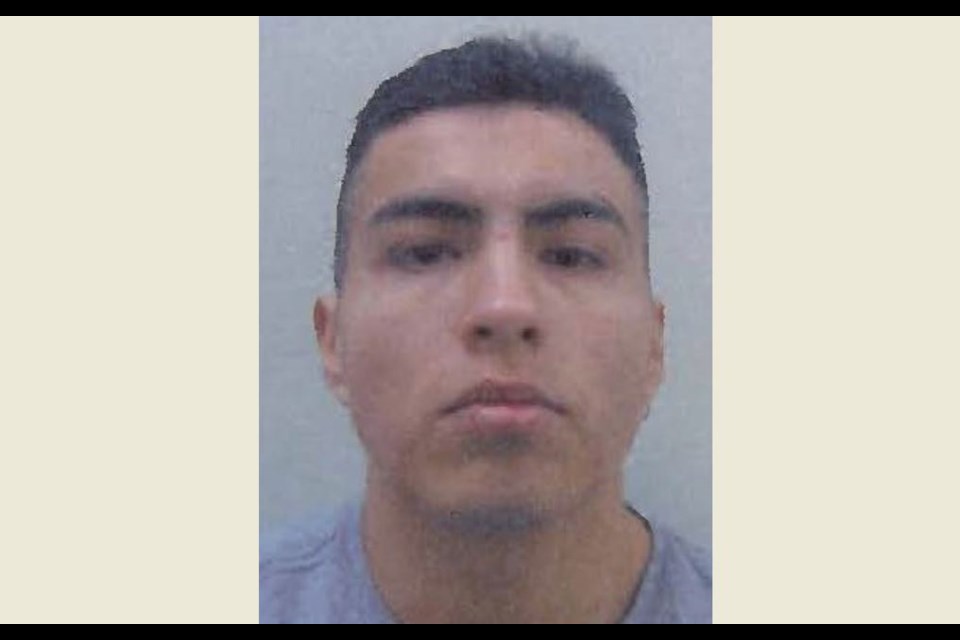THUNDER BAY - After five days of testimony, a judge will determine if the evidence shows beyond a reasonable doubt that Peter Keeash was responsible for the 2018 death of 32-year-old Irene Barkman.
Counsel presented closing submissions before Justice Danial Newton in a Thunder Bay Courtroom on Friday in the trial against Keeash on the charge of second-degree murder for his alleged role in Barkman’s death.
Keeash is also facing two counts of uttering threats and one count of forcible confinement. He has pleaded not guilty to all charges.
Crown attorney Gordon Fillmore focused much of his closing submissions on the evidence provided by three witnesses who were present in the Dufferin Street apartment the night of Oct. 29, 2018 and testified during the trial.
“They indicated the only physical altercation that occurred was between Peter and Irene,” Fillmore said.
According to one witness who testified, Keeash was observed punching Barkman three times, after which the witness covered her face with a blanket. Keeash was then seen standing over her and also observed with a knife. Another witness said he also saw Keeash standing over Barkman, who was on the floor.
Emergency crews responded after a 911 call was made by Keeash, who then left the apartment. Barkman was transported to hospital and underwent emergency surgery. She died two days later on Oct. 31, 2018.
The forensic pathologist testified that Barkman suffered four stab wounds to the neck, one of which provrf to be fatal due to the carotid artery being punctured, resulting in significant blood loss and her brain not receiving sufficient oxygen.
A broken knife blade and handle were found in the apartment with blood-like staining. A DNA analysis determined Barkman could not be excluded as the source of the DNA profile.
“What you have is a violent assault by a man brandishing a knife before the assault, I will submit brandishing the knife during the assault, and brandishing the knife after the assault,” Fillmore said.
Fillmore conceded there were some minor discrepancies between the testimony of the three witnesses inside the apartment, but said it was clear from the evidence of all three that it was Keeash who attacked Barkman.
“There’s no evidence that anyone else did,” he said.
A third witness, who was present in the apartment on the night of Oct. 29 and was in a relationship with Barkman, testified he was arguing with her when Keeash stepped in and asked if he wanted him to kill her.
The witness indicated he was intoxicated at the time of the interaction but said he did agree with Keeash, who then began to assault Barkman.
Fillmore argued this conversation demonstrates Keeash’s intent to kill Barkman.
“Even as he commits the act, by virtue of what he says, expresses his intention to kill her,” Fillmore said. “He not only caused Irene Barkman’s death, he intended to cause Irene Barkman’s death. Peter knew he killed her. He knew he had to get out of there, so Peter fled the scene.”
In his closing submission, defense attorney George Joseph argued the Crown’s case was inconsistent.
“The Crown would ask you to cherry pick the witnesses evidence that is consistent with the Crown’s theory and ignore the facts that are inconsistent,” Joseph said.
Joseph focused largely on the testimony of the third witness, who testified to Keeash asking him if he wanted Barkman dead.
Joseph asked Justice Newton to question the credibility of the witness, saying his testimony in court was different than that of statements given to police during interviews following the incident. He also pointed out that the witness had already been convicted of assaulting Barkman in the past.
“He is savvy enough to know not to tell the police that he wanted Irene dead,” Joseph said. “He lied. He lied about calling 911. That is not his voice on the 911 call. He admitted that it was not his voice and it was his brother’s voice. He lied to the police on two occasions on seeing Peter stab Irene.”
According to Joseph, the witnesses’ testimony is either "unlikely, improbable, or impossible."
“Do not be fooled by the Crown’s attempt to bolster the credibility of this witness,” he said. “The Crown says you can ignore these inconsistencies, but that is exactly how the court determines if a witness is reliable.”
Regarding the physical evidence, Joseph pointed out that the knife blade and handle, which was only analyzed for fingerprints four years after the fact, did not have any fingerprints for analysis.
The DNA found under Barkman’s fingernails could also not be definitively matched to Keeash because it may have come from one of his relatives who were also present in the apartment.
Joseph said Keeash being the one responsible for Barkman’s death is one of the inferences Justice Newton could draw, but added: “it is not the only logical inference you can draw.”
“We have very little evidence of exactly what happened in that room,” he said.
Joseph suggested if Justice Newton does conclude Keeash was the one who inflicted the fatal stab wound to Barkman, he must then determine if Keeash had the intent to commit second-degree murder.
“If you make your findings this far down the decision tree, you have to take that same evidence and decide whether or not his intoxication precluded him or raises a reasonable doubt to commit murder,” he said. “The crime of murder requires proof of a state of mind.”
On the other charges before the court, Fillmore argued Keeash threatened others in the room with the knife after the assault on Barkman, while Joseph also conceded Keeash committed forcible confinement when he took one of the witnesses out of the bedroom and forced them to stay in the living room prior to the alleged assault.
The trial has been adjourned to Sept. 26, 2022 to set a date for Justice Newton’s decision.
